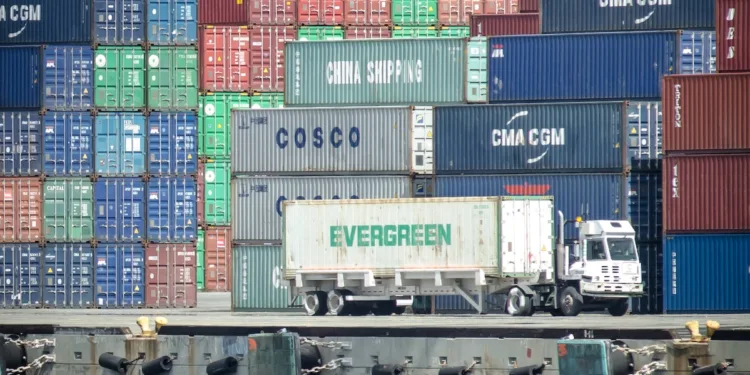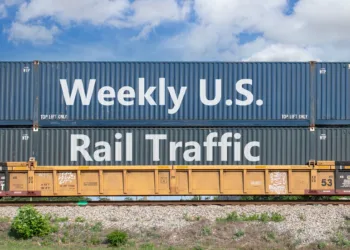Container rates on the all-important Asia-to-U.S. trade routes continue to trend downward following a July surge fueled by shippers frontloading imports ahead of tariff increases.
Another 90-day extension of the tariff truce between China and the United States into November likely won’t stimulate another import surge, said shipping consultant Freightos, in an update.
The tariff pause wasn’t driven solely by economic demands; FreightWaves has learned that the information technology systems of U.S. Customs and Border Protection has been unable to keep up pace with the increased data requirements resulting from the on-again, off-again swings in U.S. tariff and trade policies.
“Tariffs meant to be reduced or removed on many types of goods are still being collected as implementation conditions still need to be fulfilled or details of the deals are still being hammered out,” said Freightos (NYSE: CRGO) research chief Judah Levine, in a note. “These implementation lags mean it will take longer to see if the tariff changes impact freight volumes and rates.”
Levine said that trans-Pacific container arrivals likely peaked in July, as shippers brought in goods earlier than usual ahead of the China-U.S. tariff deadline in early August.
“Asia-North America spot rates have fallen 60%-70% in an almost uninterrupted slide since that early rush,” he said. “Rates to the West Coast decreased 10% to $1,744 per forty foot equivalent unit last week – the lowest level for this lane since December 2023. East Coast prices fell 21% to $2,733 per FEU for a 34% slide so far in August.”
While a top Chinese trade negotiator is set to visit Washington, growing vessel capacity is helping to push rates lower. At the same time, carriers are starting to shift some vessels away from U.S. services in a bid to avoid punitive port fees on China-linked ships which take effect in October.
The Premier Alliance of Hyundai Merchant Marine, Ocean Network Express (ONE), and Yang Ming is splitting its Mediterranean Pacific South 2 (MS2) pendulum service in two: Asia–Mediterranean (MD2) and Middle East Gulf–U.S. Gulf Pacific South 2 (GS2). The split will take as many as 10 Chinese-built ships out of U.S. service.
The charges start at $50 per net ton for Chinese-owned and -operated ships, and $18 per ton for non-Chinese operators of Chinese-built ships for each vessel calling at a U.S. port. The charges escalate over time. There are exemptions for empty vessels calling U.S. ports to load agricultural and other bulk exports.
Freightos found trans-Atlantic rates essentially unchanged at $2,284 per FEU last week.
“Not much freight impact is expected from the recent US-EU trade deal,” Levine noted, adding that auto tariff reductions have yet to take effect, and alcohol exports will not be exempted.
Asia-North Europe spot prices fell 6% last week to about $3,100 per FEU, levels last seen in late June. Asia- Mediterranean rates were 1% lower at $3,100 per FEU, the lowest level since late May. “Prices on these lanes are 60% lower than last year, with trans-Pacific prices 70% lower,” said Levine, “reflecting growing overcapacity in the container market even as the new vessel orderbook size recently hit a new record.
Find more articles by Stuart Chirls here.
Related coverage:
Vast forwarding network helps DP World see surge in first-half profit
South Carolina ports chief resigns, citing ‘personal reasons’
Trans-Pacific container rates fall to pre-Red Sea crisis levels
Trump trade war on the trans-Pacific hits Zim Q2 profits
The post Tariff clarity can’t shore up falling ocean container rates appeared first on FreightWaves.





















